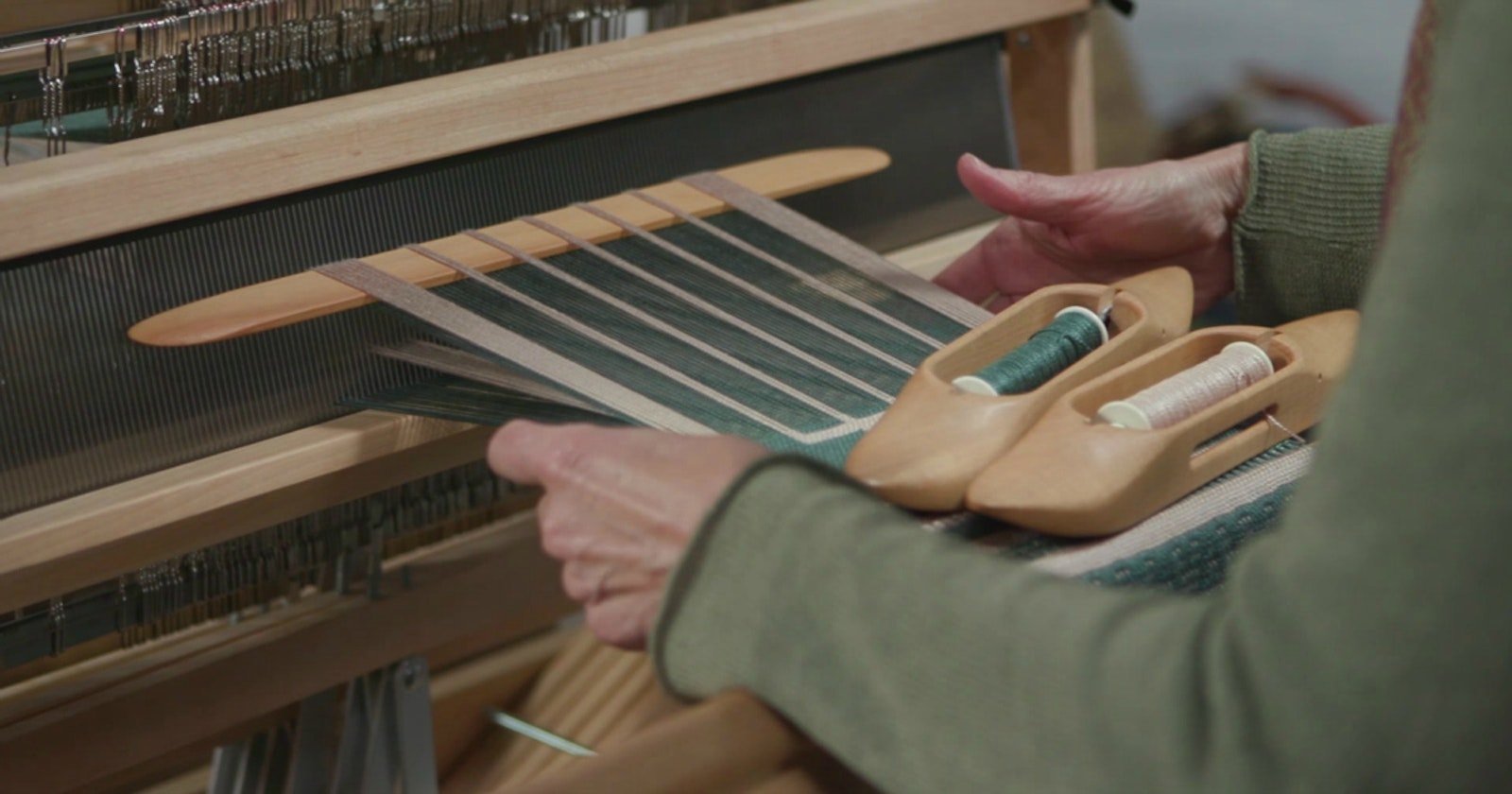It was a tricky thing to film with a lot happening simultaneously in front of, within, and underneath the loom, but between an amazing camera team, Jennifer’s serene instruction, and several pairs of really awesome socks, we got there.
Jennifer has an extensive sock wardrobe. Here is just one pair of many in the video.
Most weavers know of doubleweave as a way to create cloth that is twice the width of their loom, but there is so much more to it. Depending on how you lock your threads at the selvedges, doubleweave cloth can be two separate layers, a single double-width layer, or a tube of fabric. Working with two contrasting colors lets you alternate light and dark on your top and bottom layers of fabric, creating reversed designs on each side.
Doubleweave also lets you experiment with color in ways you might not expect. It’s one thing to weave stripes, but have you woven cloth that is striped vertically on one side and horizontally on the other? Really.
Color-and-weave, 3 ways.
Weaving a double fabric can give your pieces unexpected dimensionality. You can exploit this by stuffing your layers for a truly 3D project or control it by stitching your layers together every few rows, preferably in a contrasting color for maximum effect. (One potential downside of doubleweave is the tendency of your two layers to sag and bag unless you interlace them periodically.)
Hand-controlled techniques like leno and Brooks bouquet really stand out when they are on top of a contrasting bottom layer. And then there is the Queen of Doubleweave Techniques: doubleweave pick-up, which creates a perfectly mirrored design on both sides. It is Jennifer’s hallmark as an artist, and one she shares with you via a practice pattern and tips and advice on how to create your own unique designs.
Weave all this from just one workshop!
Never stop learning,
Allison





